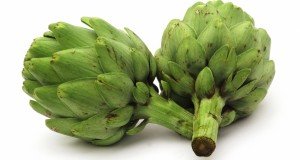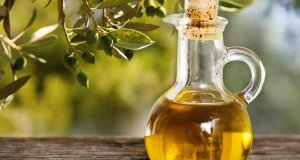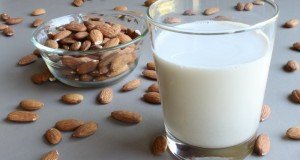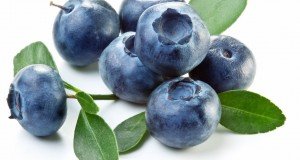Natural strategies to prevent NAFLD and support liver health
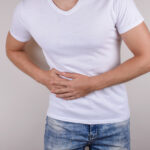 (NaturalHealth365) With rates of obesity and type 2 diabetes continuing to soar, liver disease has been largely ignored by the mainstream media.
(NaturalHealth365) With rates of obesity and type 2 diabetes continuing to soar, liver disease has been largely ignored by the mainstream media.
And the problem is widespread. In fact, experts say that nonalcoholic fatty liver disease (NAFLD) currently affects around 30 percent of the global population. It’s shocking, to say the least.
Unfortunately, because symptoms of liver disease – in the early stages – can be so mild or unnoticeable, many people don’t even realize they have it. But this ‘silent’ disease can have deadly consequences.
Keep in mind, about 25 percent of the time, NAFLD progresses to a more serious condition known as nonalcoholic steatohepatitis, or NASH – which can cause liver scarring, liver failure, and even liver cancer.
How to prevent HUGE health problems: Avoid liver disease naturally
As you continue to read here, we’ll reveal how proper nutrition can help you to avoid liver disease. But first, we must understand the scope of the issue.
The liver neutralizes and eliminates toxins and waste products – such as ammonia – that would otherwise accumulate in the blood. In addition, it produces the bile needed to digest fat, stores essential vitamins and minerals, and breaks down and detoxifies alcohol, medications, and environmental toxins.
However, liver function can be compromised by NAFLD, which is defined as a condition in which fat constitutes more than 5 percent of the liver. As the name suggests, NAFLD can occur in people who consume few or no alcoholic beverages.
Excessive consumption of processed sugars and conventionally raised fatty foods will increase your risk of liver disease – along with being overweight and living a sedentary lifestyle.
In addition, the use of prescription and over-the-counter medications can contribute to NAFLD.
Warning: NAFLD can progress to steatohepatitis
NAFLD can be considered a warning light on a car’s dashboard – or, even more accurately – a yellow traffic light that signals the need for caution. If not arrested, NAFLD can progress to nonalcoholic steatohepatitis, or NASH – defined as fat comprising 10 percent of the liver.
Symptoms of NASH can include fatigue, dark urine, weight loss, lack of appetite, jaundice (yellowing of skin or eyes), and pain in the center or right upper part of the belly.
Although NAFLD is becoming increasingly common, the good news is that liver cells have an amazing ability to regenerate. NAFLD can be prevented, treated – and even reversed – with simple lifestyle changes and nutritional protocols.
Let’s take a closer look at some of the most effective supplements and nutrients to support liver health. As always, check first with your holistic doctor before trying them.
Silymarin in milk thistle helps restore liver cells
When it comes to herbal interventions for liver disease, milk thistle just might be the all-time MVP.
Its active principle, silymarin, has been shown to detoxify the liver, reduce oxidative damage caused by free radicals, decrease liver inflammation, regulate the metabolism of fats, and help clear the blood of toxins.
Silymarin has even been shown to be effective in reducing the growth of liver cancer cells and has helped prolong survival rates in clinical studies of patients with liver cancer.
In addition, silymarin improves insulin resistance – thereby combating diabetes, another threat to liver health. Because it can rebuild liver cells, silymarin can reverse the damage from alcohol consumption, pesticides, and heavy metals.
Look for non-GMO milk thistle products standardized to contain 70 to 80 percent silymarin. Holistic healthcare providers usually recommend between 280 mg and 450 mg a day for liver support.
Curcumin in turmeric combats NAFLD
Turmeric, a liver support mainstay in the Ayurvedic healing system and traditional Chinese medicine, is a common kitchen spice that lends a tangy flavor and distinctive yellow coloration to curry dishes and mustards. It owes its therapeutic value to the presence of curcumin, an antioxidant flavonoid.
Randomized clinical trials have supported the ability of curcumin to reduce liver fat, cut inflammation, support healthy bile production, and promote detoxification.
Although it’s almost impossible to consume enough turmeric for therapeutic effects, no worries – curcumin is available as a supplement. The ‘standard’ recommended amount is around 450 mg to 1,000 mg daily for liver support.
Glutathione: The body’s ‘master’ antioxidant is crucial for liver health
Glutathione is found in every cell, but is particularly concentrated in the liver – where it is essential to detoxification. But – as is the case with so many precious, life-sustaining compounds – levels drop with normal aging (and with chronic disease).
However, most experts say the best way to boost glutathione levels is not through supplements but through eating optimal amounts of foods rich in glutathione’s three “building blocks” – the amino acids cysteine, glycine, and glutamic acid.
Organic, cage-free eggs, garlic, and non-denatured whey protein are particularly valuable for boosting glutathione levels, as are cruciferous vegetables such as broccoli and Brussels sprouts. Other good sources are asparagus, spinach, avocado, squash, and green tea.
N-acetyl cysteine renews glutathione
N-acetyl cysteine, or NAC, is a supplementary form of cysteine. It is so essential to liver function that medical professionals rely on it in hospital settings to treat life-threatening acetaminophen overdoses.
NAC’s high success rate is because this amino acid restores and replenishes levels of glutathione that toxins have depleted. Clinical studies have also shown that NAC can substantially improve liver function in patients with NAFLD.
The usual amount for treating NAFLD is 500 mg to 1,000 mg daily.
Vitamin C can help you to avoid fat buildup around the liver
Vitamin C, also known as ascorbic acid, is a powerful antioxidant and immune system booster.
This essential vitamin protects against oxidative damage to the liver – and can help reduce accumulated fat. According to one study, amounts as low as 500 mg of vitamin C a day can help prevent fatty buildup – while amounts of 5,000 mg per day help to actively flush out fats.
A holistic physician might suggest an amount of 1,500 mg a day for liver support. As a side note, vitamin C pioneer Dr. Linus Pauling typically advised somewhat higher dosages, in the area of 2,500 mg to 10,000 mg daily.
Alpha-lipoic acid (ALA) enhances the effects of glutathione
This vitamin-like compound is water-soluble, meaning that it can easily penetrate cell membranes for therapeutic effect. A potent antioxidant, ALA works hand-in-glove with glutathione to neutralize and eliminate toxic heavy metals and scavenge harmful free radicals.
Studies have shown that ALA can decrease the scarring associated with liver injury. A typical amount for liver support is 100 to 300 mg a day.
Show your liver some love with an organic diet
Eating foods high in beta-carotene, such as sweet potatoes, squash, and carrots, is a wise move to avoid liver disease. The body converts beta-carotene to vitamin A, indispensable for flushing out toxins and reducing fat in the liver.
Potassium-rich foods, such as bananas and beet greens, are also beneficial to the liver.
Don’t forget: Opt for certified organic foods as much as possible for best results. These can help to greatly lower your toxic burden – thereby reducing stress and strain on the liver.
And, finally, sharply reducing or eliminating alcohol, refined sugars, fried or fatty foods, processed foods or fast (junk) foods is an excellent way to ‘love your liver.’
Editor’s note: Discover the best ways to avoid fatty liver disease from top experts, own the Fatty Liver Docu-Class created by NaturalHealth365 Programs.
Sources for this article include:



